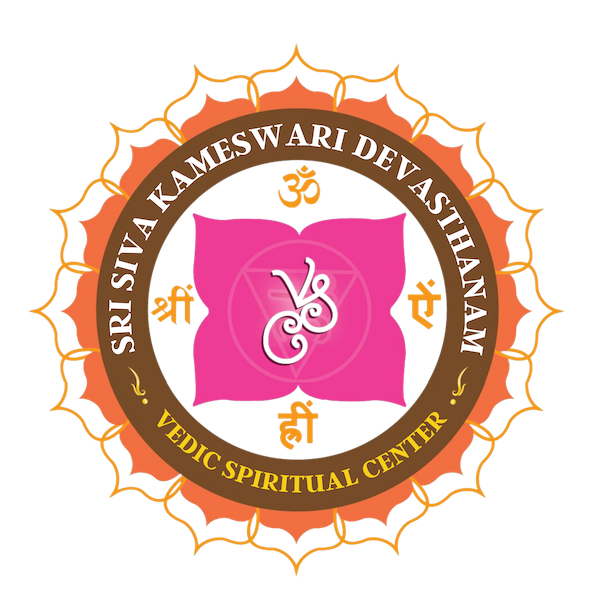The Importance of Sri Maha Rudram
The term “Rudra” symbolically translates to “Fire emanating from the Earth’s core, spreading divine blessings worldwide”. Sri Rudram is an ancient Vedic chant in adoration of Lord Shiva, featuring a comprehensive list of the deity’s various names. By reciting the Sri Rudram, Lord Shiva’s numerous characteristics and aspects are honored and worshipped. The benefits of chanting Rudram are immense, and it can be performed with or without the presence of a Vedic yajna ritual. When paired with a Vedic fire ceremony, it transforms into the Rudra Yajna.
Sri Rudram, alternatively known as Rudra Prasna or Satha rudriyam, is embedded within the Yajurveda and is lauded as one of the most substantial Vedic hymns dedicated to Lord Shiva’s Rudra aspect. Several references in the Vedas, Itihasas, puranas, samhitas, Bhakti traditions, and local folklore underscore the prominence of Sri Rudram. Discussions in the Mahabharata and several other references in various Puranas all amplify the significance of Sri Rudram. Two key mantras – the potent panchakshari mantra of Lord Shiva and the Mahamritunjaya Mantra for liberation – are integral to Sri Rudram.
The Eswara Geetha underscores the importance of Rudram in a verse:
“Vedanaam samavediyam, Yajusham sata rudreeyam”
॥वेदानाम् सामवेदीयम्, याजुषम् शतरुद्रीयम् ॥
Sri Rudram comprises two segments – Namakam and Chamakam. As part of the Yajur Veda, it is universally renowned for its capacity to remove all obstacles and difficulties. Namakam (Chapter 16 of the Yajurveda) and Chamakam (Chapter 18 of the Yajurveda) earn their names from the repetition of the words “Namo” and “Chame”, respectively.
There are several methods to chant Rudram. A regular chant of Sri Rudram is termed “Roopam”, which consists of chanting the Namakam once followed by the Chamakam once. Further, we have:
- “Ekadasa Rudram”: 11 recitations of Namakam followed by one of Chamakam
- “Laghu Rudram”: 11 rounds of Ekadasa Rudram
- “Maha Rudram”: 11 rounds of Laghu Rudram
- “Ati Rudram”: 11 rounds of Maha Rudram
It is commonly believed that either chanting or merely listening to Sri Rudram offers comprehensive benefits, relieving all kinds of suffering. A simple recitation of Rudram, involving chanting the 11 Anuvakas or chapters of Namakam and Chamakam, is in itself an intricate ritual. The grandest method of reciting Rudram is the Maha Rudram, repeated 1331 times, and it possesses enormous power. When Maha Rudra parayana is complemented with Abhishekam, Havanam, and Brahmana Bhojana, it evolves into a Maha Rudra Yagam, unparalleled in its importance.
The Rudra Maha Yajnam venerates Lord Shiva, the very source of cosmic energy for all creation. Lord Shiva is the embodiment of infinite mercy, compassion, and love, and He conquers Death. He is traditionally worshipped in the form of a Linga, symbolizing the universe itself. The act of Abhisheka cools the Shiva Lingam and pleases the deity.
The Rudra Yajna is the most sacred and potent of all Maha Yajnas, incorporating two Nishkama Karmas, namely, Daiva Yajna (worship of Shiva and other divinities), and Manushya Yajna (performed with a large number of devotees). This event is performed primarily for the eradication of one’s sins, and for bringing peace, prosperity, and familial harmony.
The Maha Rudra Yajna, one of the highest forms of community worship, involves 11 Ritwiks reciting the Sri Rudra Prasna 11 times on 11 occasions, totaling 1,331 times, followed by one-tenth (133) recitations for the homam.
This magnificent four-day Vedic ceremony is for the welfare of all devotees, their families, all humanity, and for universal peace and prosperity. Sponsorship and participation in this Yajnam bring immense benefits. Therefore, it is encouraged to contribute and help conduct this Yajnam in a grand manner.
The sponsors will be enveloped in a full spectrum of divine blessings, encompassing various aspects of life. In recognition of their significant role, the Yajamana will receive a Silver Pendant, a Silver Ardhanareswara Vigraha (depicting Lord Shiva and Goddess Parvati in unity), Kumkuma (sacred vermilion), Vibhuti (sacred ash), and a Sesha Vastram (holy cloth) associated with Siva Kameswari and Lord Shiva.
These revered tokens epitomize the profound connection formed during this event and the blessings conferred upon the sponsors. Sponsor Now - 11001$
These blessed items symbolize the divine energies invoked during the Navachandi Maha Rudram and the bestowed blessings upon the sponsors. Sponsor Now - 5001$


